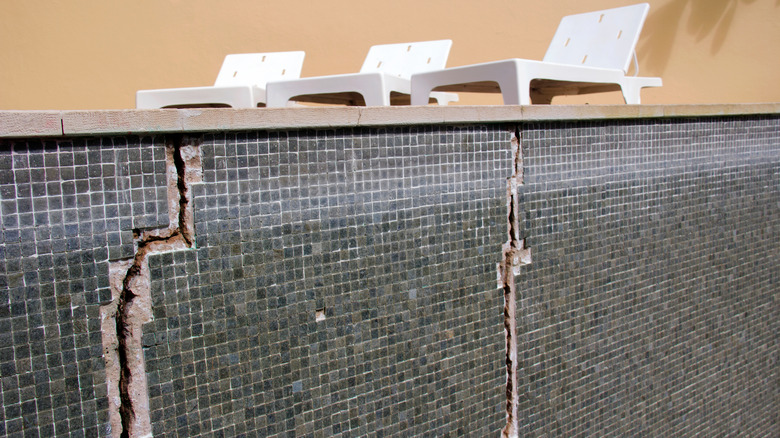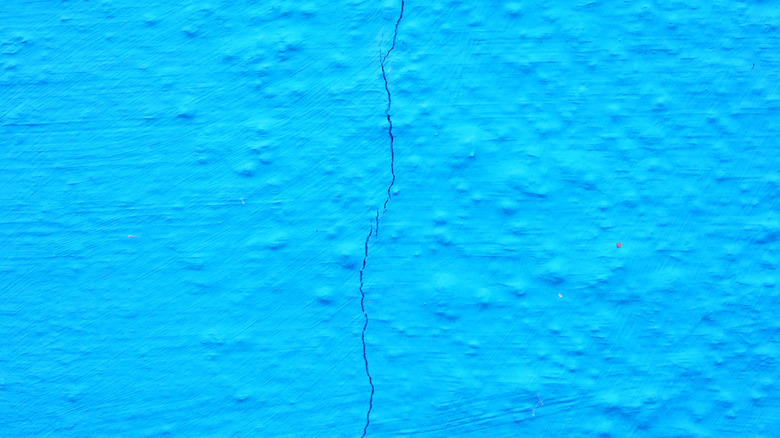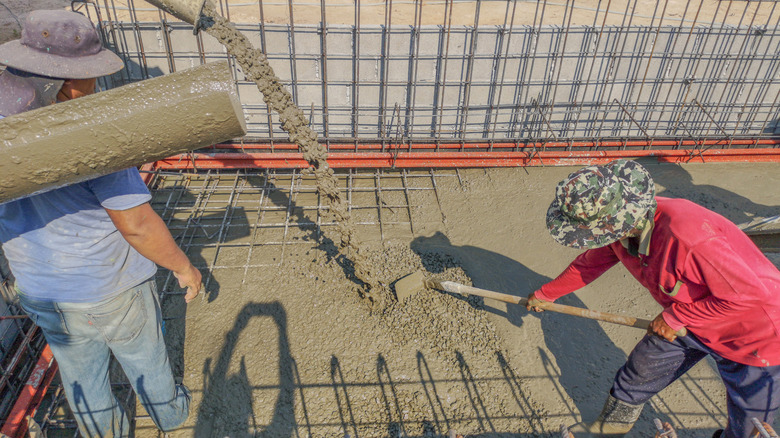Are Cracks In Your Pool A Safety Risk?
If you're the owner of an in-ground swimming pool, you've likely seen cracks and splits develop as its foundation settles into the ground over time. Luckily, these fractures don't always call attention to existing safety hazards that may endanger you or the members of your household. But when they do, repairs and damage control could cost your family up to thousands of dollars — especially if ignored until the last minute, as contractors attempt to salvage your pool, backyard, and possibly even the structural features of your home.
Cracks form along the bottom and sides of your pool for different reasons, as there are many natural and manmade factors that impact its condition and lifespan. Therefore, it's important for homeowners to regularly inspect the state of their backyards and pools while also seeking routine maintenance from a skilled professional. A simple way to determine if a crack signals underlying damage is to observe its depth. Cracks that only penetrate the surface of your pool aren't likely to hint at extensive damage, while cracks that run deep are much more prone to suggest foundational issues that require immediate attention. Here's why your swimming pool develops cracks in the first place, as well as the different ways to go about repairing them.
When cracks require attention from an expert
Structural cracks are fractures that indicate severe issues with a swimming pool's foundation, which need to be cared for in order to avoid costly and time-consuming ruin. These types of fractures may signify leakage, shifting, or other urgent matters that could easily threaten the safety of your pool's guests if left unattended.
Cracks suggesting serious structural damage usually imply errors made on the contractor's part when installing the pool. For example, structural cracks can form as a result of curing a pool too soon, installing plumbing components incorrectly, or messing up a pool's mixed-to-applied concrete ratio. Structural cracks can also form if an in-ground pool is mistakenly installed in expansive soil featuring clay, which, when exposed to moisture, applies intense pressure upon a pool's foundation until the material gives and splits from stress. Building upon land that is uneven or susceptible to earthquakes is also a breeding ground for future structural issues. Hiring a skilled technician to inspect your property and install your swimming pool is an easy means to ensure your pool will be constructed with safety and longevity in mind.
There aren't many ways to fix structural cracks in a pool's foundation, and the methods that are sound typically involve the help of a professional. Applying over-the-counter pool maintenance products like Pool Puddy isn't a sufficient way to fix these types of fractures yourself, as such products serve as only temporary solutions to large issues.
When cracks are harmless
In-ground pools are installed by lining a hole in the ground with a foundation of fiberglass, vinyl, or concrete. Each of these materials is susceptible to damage over time, though concrete is especially prone to cracking after initial installation, since the mixture of rock is more sensitive to changes in surrounding moisture. Thus, a common agent in crack formation is overly-hot or dry weather conditions during construction. Though surface-level cracks are almost unavoidable, small splits in the concrete can also lead to deeper fissures and should be tended to before they become worse.
These cracks — referred to as "check cracks" or "crazing" — usually begin to form within the first year of pool installation as the concrete adjusts to the arid environment. When new concrete is exposed to high temperatures or excessive amounts of water, the substance begins to shrink, resulting in minor, surface-level indentations. Crazing is also likely to appear if the pool's concrete lining is poured and cured on a windy day since strong breezes can cause concrete to dry unevenly before residents fill the pool with water. Essentially, check cracks are likely to occur any time the elements interfere with concrete's ability to dry and harden properly.
Crazing is easy to identify inside a swimming pool since the cracks normally appear in clusters or groups, as opposed to by themselves. Check cracks are also convenient for homeowners to patch singlehandedly and rarely ever indicate major structural issues.


